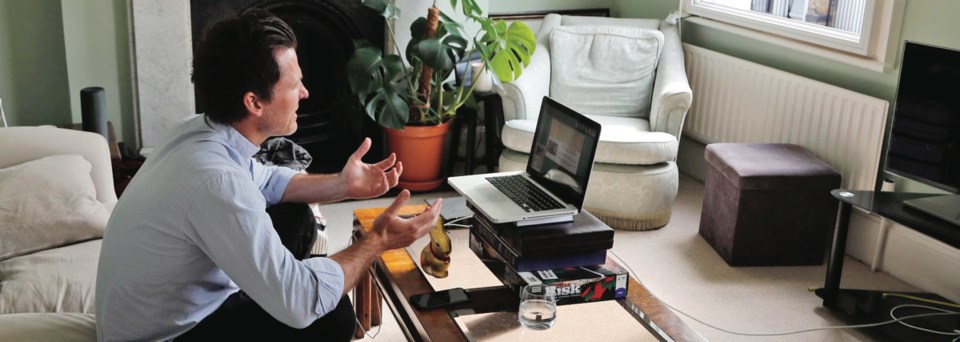Since the start of the COVID-19 epidemic in B.C., the number of people working from home has increased. As a result, a divide between organizations able to continue operating in times of social distancing and physical isolation and those unprepared or unable to do so has emerged.
The current public health crisis favours organizations that have been more forward-looking in their approach to technology and flexible work arrangements.
There remain issues. Many people used to working remotely now have to compete for time, quiet and space with their kids or other working adults in the household for time on computers, for internet bandwidth and for online services that allow lessons and business to happen.
Nonetheless, for individuals and organizations that have supported and enabled remote work have been able to transition to the COVID-19 reality somewhat more smoothly.
For a period in the mid-2000s, even some government agencies were considering telework a possible solution to some operational problems. A remote workforce can lower an employer’s need for office space, reducing rent and maintenance costs. If secure systems and protected internet access are in place and employees apply online-security best practices, tele-working can lower IT costs, while providing staff with hardware to use at home for work only — personal use prohibited — further increases security.
Telework was touted as a partial response to emerging climate issues. By eliminating employee commuting, a business ticks the good environmental-citizen box, boosts staff morale and meets demands for work-life balance — an organizational objective that human-resources managers, who were eyeing the then-up-and-coming millenial generation, saw as particularly pressing.
Then the 2008 recession hit, and a Great Division happened.
Some organizations decided in favour of the increased network, operational and IT security that comes with an onsite workforce. High rates of teleworking staff also disrupt organizational culture, requiring more effort and resources to either maintain workforce cohesion.
Other organizations took another approach. As new technologies emerged to support dispersed working environments, the organizations deployed systems, platforms, security protocols and network-safety training that allow them to recruit employees and contractors from anywhere to collaborate and work together effectively. They found what worked operationally and culturally, and ran with it.
Today, these organizations rely on widely dispersed workforces knit together by technology.
Not all is sunshine and daffodils, however. Security remains an issue for all organizations, but remote networks are often more vulnerable.
Many remotely networked organizations also leverage the gig economy to provide short-term, piecework contracts and little security, low pay, and few-to-no benefits for workers.
But an organization's culture and social contract with its workers are independent of whether workers meet regularly in person or through online video conferencing. Some distributed, online-connected organizations hire employees through longer-term or indeterminate-period contracts, pay market rates or better, and provide generous benefits to attract the best talent.
In the current uncertain recent times, however, the distributed-worker approach has demonstrated advantages. These operations will have experienced less-direct disruption to day-to-day work than many traditional in-person-in-office organizations that have shut their physical offices, are staggering staff office hours, or moving them to the home office. Even if COVID-19 has caused clients to suspend contracts and thrown suppliers into disarray, being able to be easily networked remotely confers some built-in organizational resiliency when governments enact quarantine laws and order citizens to self-isolate and maintain social distancing.
In addition, these organizations already have established systems, platforms and security training and protocols to support remote work that normally in-office businesses and agencies now are scrambling to put in place.
Online-only operations also help to protect staff and contractors from pathological viruses. Although family and friends might expose them to the novel coronavirus, at least their colleagues won’t. Furthermore, many workers who already work remotely likely have established, dedicated and enclosed in-home workspaces to allow Canada Revenue Agency-permitted business-use-of-home expense deductions. Such separate spaces offer a bit of quiet away from often-demanding daily COVID-19-family life.
As businesses shift their employees to at-home remote work while waiting out the pandemic, we might see a longer-lasting change in attitude and approaches toward tech-enabled virtual work conditions. It will be interesting to see how many of these lessons are retained among the broader business community once the urgent threat of COVID-19 fades.



